- 3 large ocelli in upper row
- 1 small central ocellus
- 4 lower "normal" ocelli:
- Deuterosminthurus bicinctus (moderately common) - yellow with two large patches of violet pigment on the dorsal side. - All setae on the outer side of the tibiotarsus of the third leg (leg3) are about the same length. - In males, long specialised backward-pointing setae are not present at the posterior end of the sixth abdominal segment. - In females, the setae surrounding the anus are all of similar thickness.
- Deuterosminthurus pallipes (common, widespread). - All setae on the outer side of the tibiotarsus of the third leg (leg3) are about the same length. - In males, long specialised backward-pointing setae are not present at the posterior end of the sixth abdominal segment. - In females, the setae surrounding the anus are all of similar thickness (c.f. Bourletiella hortensis).
- Deuterosminthurus sulphureus (moderately common) - uniformly yellow. - Some of the setae on the outer side of the tibiotarsus of the third leg (leg3) are longer than others. - In males, long specialised backward-pointing setae are present at the posterior end of the sixth abdominal segment. - In females, the setae surrounding the anus are of different thickness. - The mucro is spoon-shaped.
Deuterosminthurus bicinctus:
The nominate form of D. bicinctus is easy to recognize, but there is also a yellow form, Deuterosminthurus bicinctus form flavus (N.B. head is paler than the body).
Possible(?) candidates:
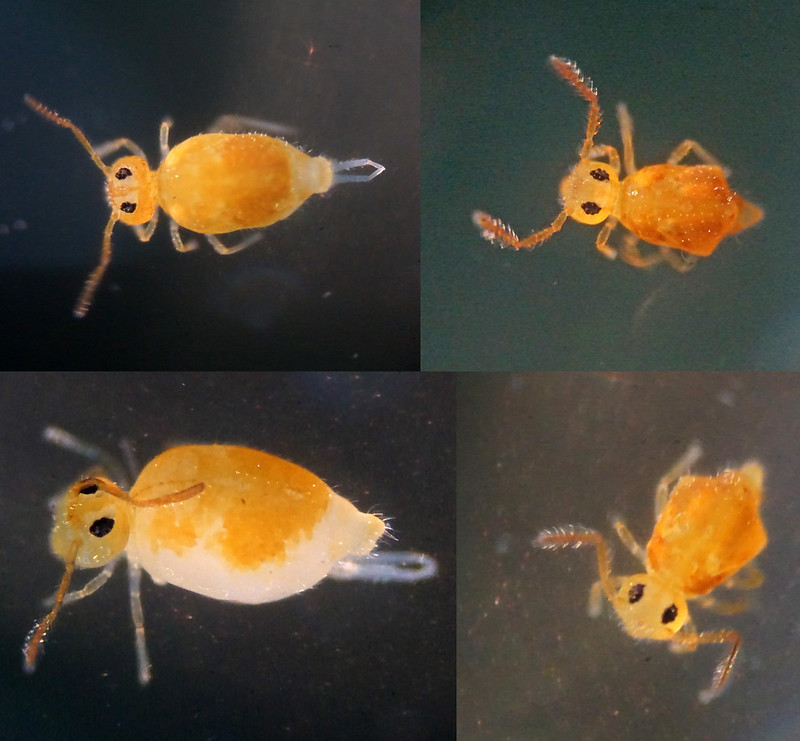
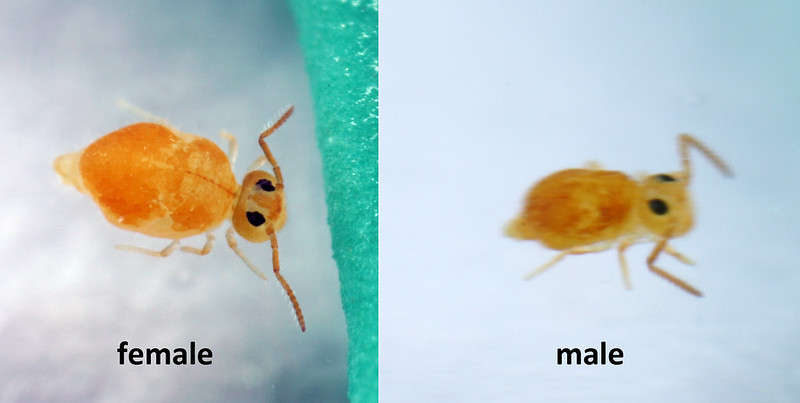
Characteristic arrangement of ocelli:
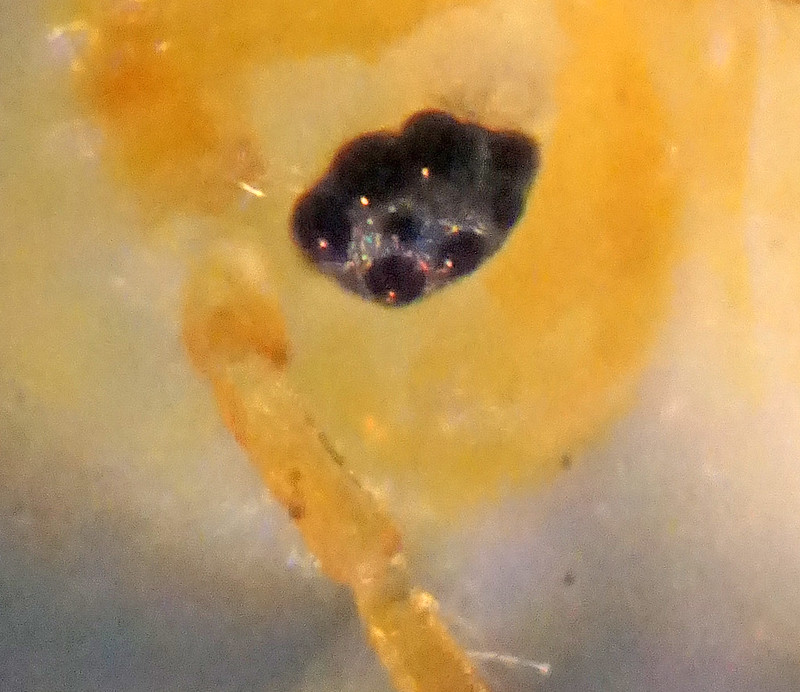
Deuterosminthurus pallipes:

Bourletiella hortensis is very similar to Deuterosminthurus pallipes but can be distinguished based on the location of the apical filament of the inner claw (unguiculus or empodium) (Bretfeld, 1999):
- Bourletiella hortensis - filament is subapical (also, body shape is quite globular)
- Deuterosminthurus pallipes - filament is apical (body shape tends to be more elongated)
Deuterosminthurus pallipes is a small gobular springtail noted for appearing on vegetation from spring to autumn. These individuals represent mature adults looking to perform their mating dance on a leaf. The distinctive features of this springtail are the long length of the antennae (nearly as long as the body) and the distinctive arrangement of ocelli on the eyespot:
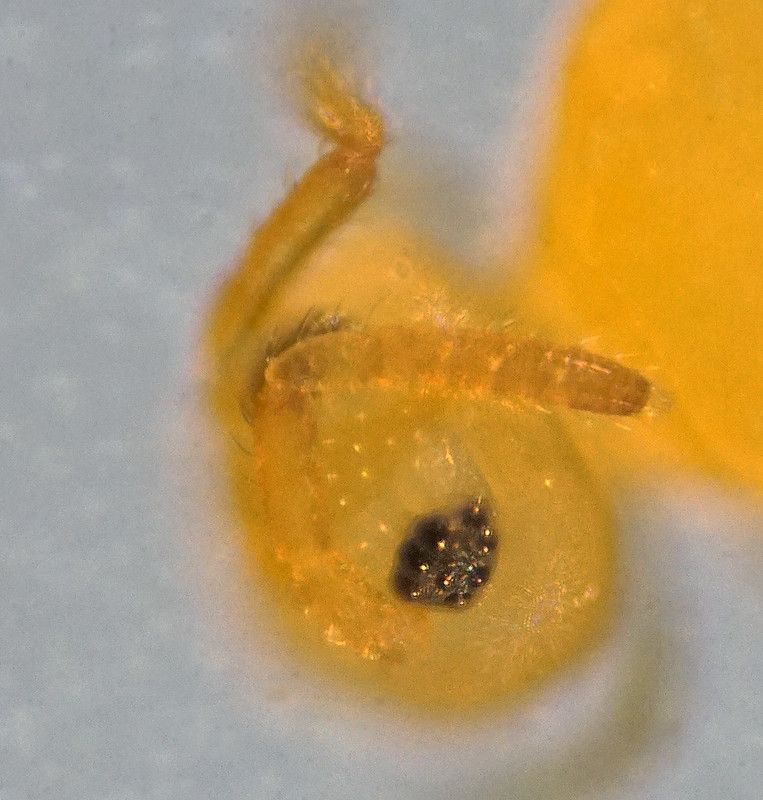
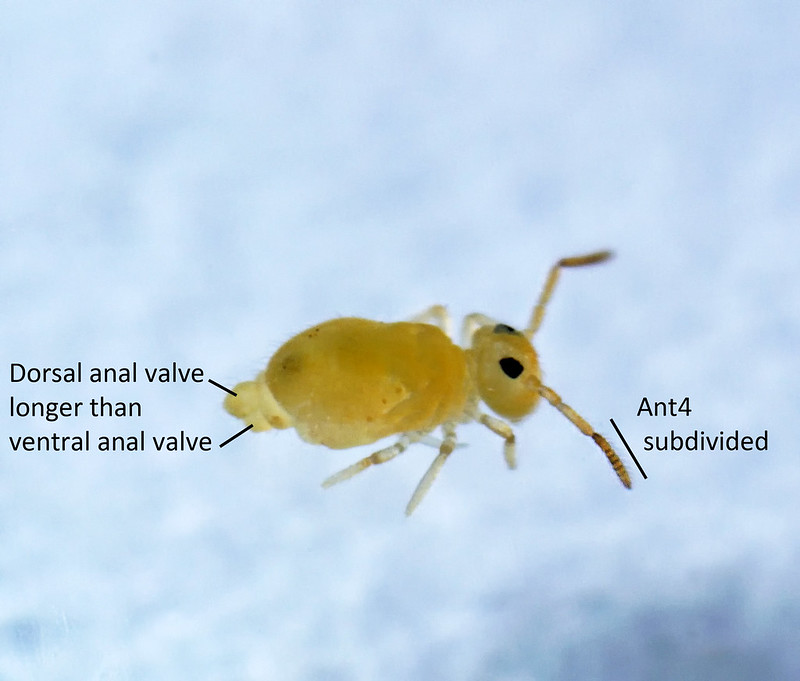
Male antennae distinctly longer (relative to body length) than females:
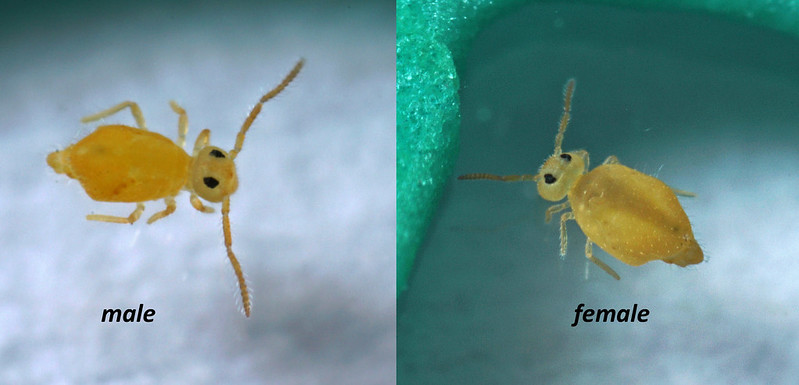
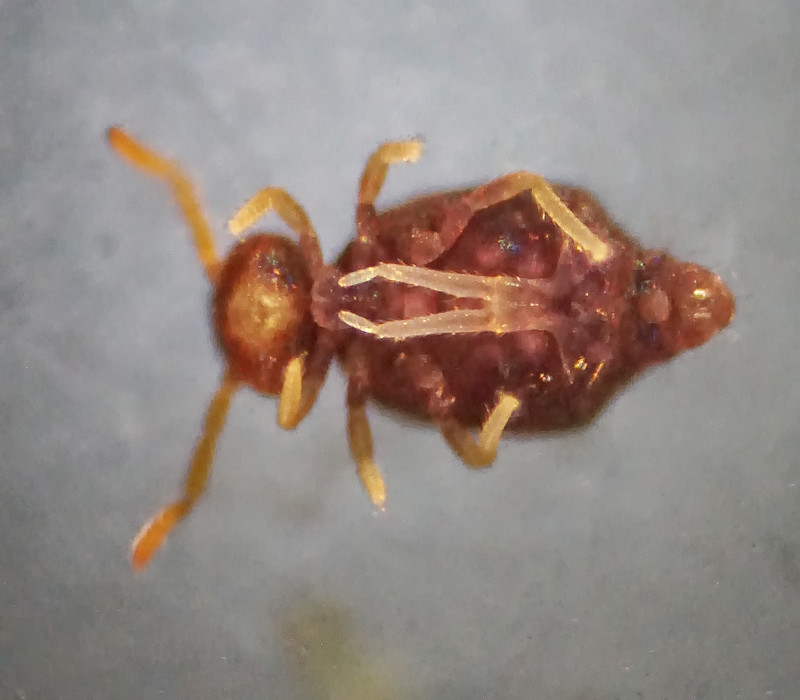
The other notable thing about this species is that it occurs in two colour forms, purple and a yellow form called Deuterosminthurus pallipes form repandus. This form is easy to confuse with Sminthurinus aureus (which has somewhat shorter antennae, different arrangement of ocelli). Males and females occur in both colour forms, frequently in mixed populations, and freely interbreed:


Frans Janssens says that the angular body shape seen in the specimen above represents an immature individual where the gonads are not fully mature.
All setae on the outer side of the tibiotarsus of the third leg (leg3) are about the same length:
In females, the setae surrounding the anus are all of similar thickness:
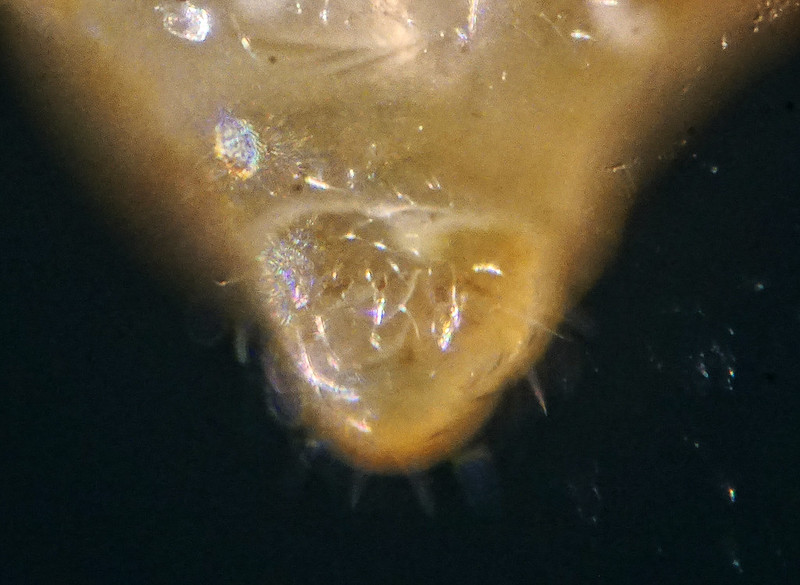
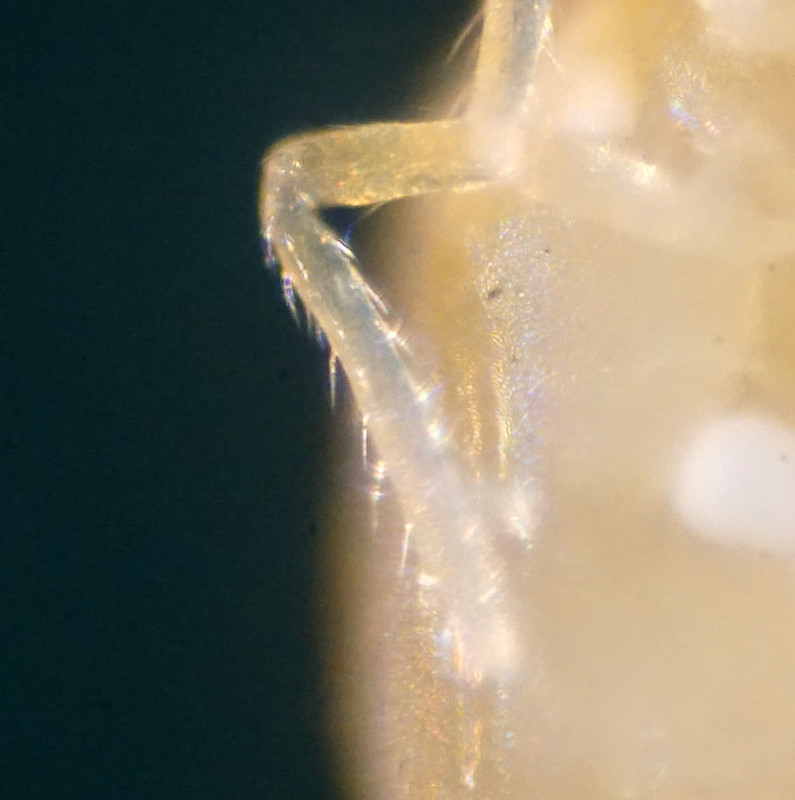
Oh my gosh, this is so amazing blogpost! Thank you for this. Last week I found a bunch of Deuterosminthurus bicinctus dancing near Oxford, it was lovely.
ReplyDelete